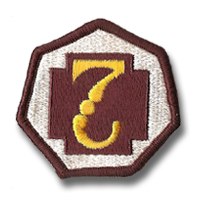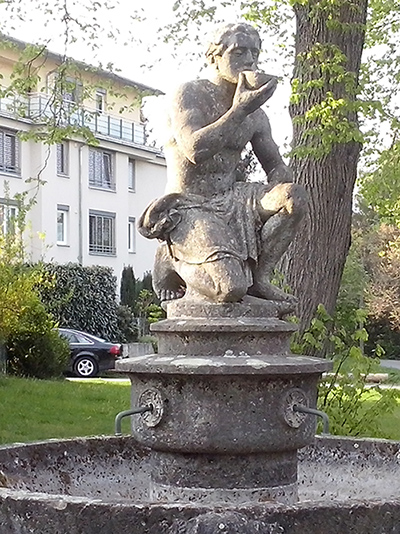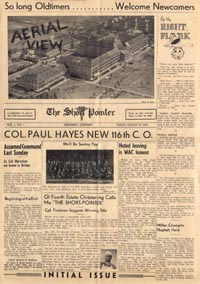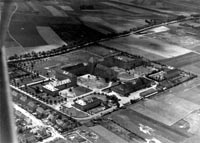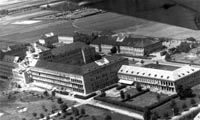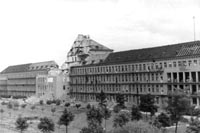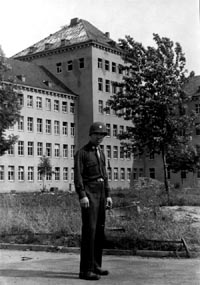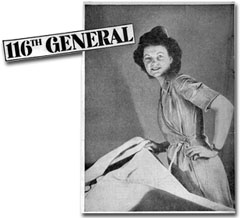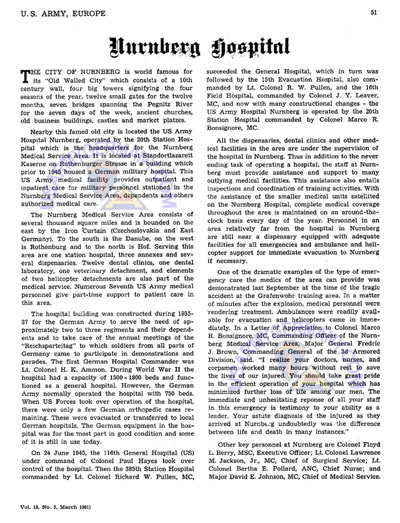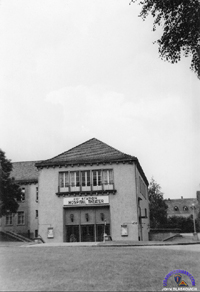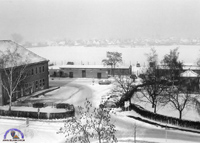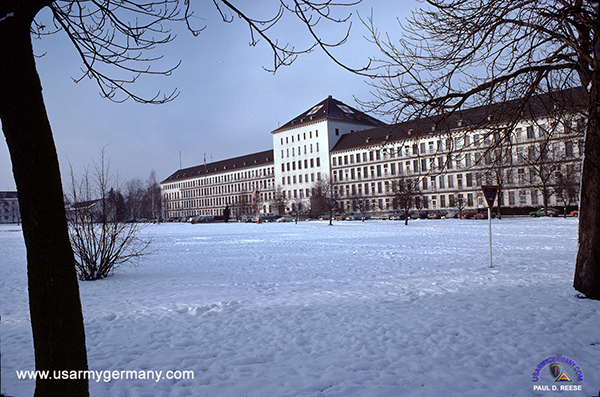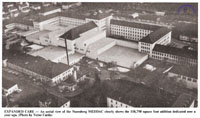| If you do
NOT see the Table of Contents frame to the left of this page, then
Click here to open 'USArmyGermany' frameset |
|||||||||||||||||||||||||||||||||||||||||||||
USAH Nürnberg |
|||||||||||||||||||||||||||||||||||||||||||||
|
|
|||||||||||||||||||||||||||||||||||||||||||||
|
|||||||||||||||||||||||||||||||||||||||||||||
|
|
|||||||||||||||||||||||||||||||||||||||||||||
|
|||||||||||||||||||||||||||||||||||||||||||||
| 116th General Hospital | |||||||||||||||||||||||||||||||||||||||||||||
| (Source: USAMEDDAC Nuernberg Fact Sheet; USAREUR History Office web site) | |||||||||||||||||||||||||||||||||||||||||||||
|
|
|||||||||||||||||||||||||||||||||||||||||||||
| (Source: 130th General Hospital, Nuernberg; USAREUR History Office web site) | |||||||||||||||||||||||||||||||||||||||||||||
| The hospital
building was constructed during 1935 to 1937 for the German Army to
serve the needs of approximately 2-3 regiments and their dependents
and to take care of the annual meetings of the "Reichsparteitag"
to which soldiers from all parts of Germany came to participate in
demonstrations and parades. It was called Standort-Lazarett. When the US Forces took over operation of the hospital (in 1945), the German patients had to be evacuated to German hospitals. The equipment in the hospital, for the most part, was in good condition and the x-ray machines were used until about 1965. |
|||||||||||||||||||||||||||||||||||||||||||||
|
|
|||||||||||||||||||||||||||||||||||||||||||||
|
|||||||||||||||||||||||||||||||||||||||||||||
| (Source: STARS & STRIPES, MIDWEEK section, Jan 9, 1946) | |||||||||||||||||||||||||||||||||||||||||||||
|
|||||||||||||||||||||||||||||||||||||||||||||
The Germans built the 116th and opened it for business in 1937. Its bed capacity at first was 450, but when the invasion started, it was enlarged to accommodate 1,100. German patients were moved out on May 28, 1945, and the first American patient was admitted on June 24. |
|||||||||||||||||||||||||||||||||||||||||||||
| If you have more
information on the history or organization of the 116th Gen Hosp/USAH
Nürnberg, please contact me |
|||||||||||||||||||||||||||||||||||||||||||||
|
|
|||||||||||||||||||||||||||||||||||||||||||||
| 385th Station Hospital | |||||||||||||||||||||||||||||||||||||||||||||
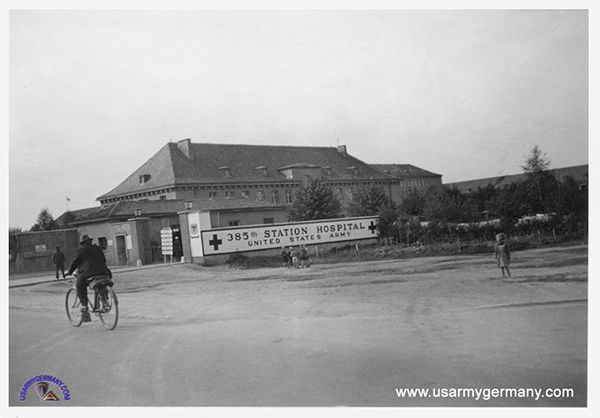 Entrance to the 385th Station Hospital in Nürnberg, 1946 (Webmaster's collection) |
|||||||||||||||||||||||||||||||||||||||||||||
| (Source: 385th Station Hospital, Nuernberg; installment of the "Our Army Hospitals" series that appeared in the Medical Bulletin published in USFET during the mid 1940s. Online copy at USAREUR History Office web site) | |||||||||||||||||||||||||||||||||||||||||||||
| Located in Nürnberg,
the approximate center of the U.S.-occupied zone of Germany, the hospital
plant operated by the 385th Station Hospital has been open for the
reception of patients since 24 June 1945. In name the 385th is comparatively
new in the European Theater. However, the history of the unit prior
to 1 April 1946, the time of redesignation, was that of the 116th
General Hospital. The original organization was activated at Camp
Ellis, Illinois, 10 March 1944; departed for the United Kingdom 18
July 1944. On 29 July 1944, operation of Hospital Plant 4190 at (Uniacke)
Barracks, Harrogate, Yorkshire, England, began and continued until
20 April 1945. Departing from England, 10 May 1945, personnel and
equipment arrived at Area X, Camp Twenty Grand, Rouen, France, to
await further assignment. On 6 June, all personnel, with the exception
of those in the motor convoy, departed in "40 and 8's" for Nürnberg,
arriving at that destination three days later. The hospital site, Standort Lazarett, located on the western edge of Nürnberg, was constructed expressly as a military hospital. Begun in 1935 and completed in 1937, construction compares favorably with that of an American counterpart of ten years ago. A 15-acre plot of ground surrounded by high fences, landscaped with young trees, shrubs, small floral gardens and spacious front lawns, contribute to a favorable atmosphere for treatment of the sick and injured. On warm sunny days ambulatory patients take advantage of paths and lawns for strolling and sunbathing out of view of the public. A small athletic field within the grounds is available to convalescent patients for softball, track and soccer. By American standards the hospital was fairly modern and well equipped in most respects. However, it was not without damage. 0ne bomb had exploded in the front center section of the main building. Although the damage was great structurally, none of the fine medical equipment was damaged. The professional staff performed under difficulty for approximately six months, because the bomb damaged the large elevator used to transport litter patients to surgery, X-ray, and physical therapy on the third floor of the central wing. Treatment of patients is confined to two buildings, the main building accommodatlng all cases with the exception of psychiatric patients who are confined in a two-story building adjacent to the central hospital building. The main building is a four-story structure of brick construction. The central wing contains administrative offices on the first floor; physical therapy, obstetrical-gynocological section and genito-urinary clinic on the second floor; surgery and X-ray on the third; and female patients on the fourth. This wing divides the medical and surgical services. The other buildings on the grounds are the laboratory and dental clinic in one building; the mess halls (officers, nurses, enlisted men, and patients), Red Cross recreation rooms, officers' club and laundry in another building; the motor pool; two officers quarters; and the main gate guard post. Enlisted men are quartered in a German kaserne one-quarter mile from the hospital. Recreation facilities are available for enlisted men at a Sport-Pltaz, approximately one-half mile from the barracks. A suitable building serves as the enlisted men's club. Cinder track, swimming pool and jumping pits are available in addition to fine fields for softball and football. Inasmuch as the 385th Station Hospital is located near the scene of the War Crime Trials, patient care and treatment has been accorded not only Allied Nationals but occassionally a witness for the defense. Under great secrecy some of the condemned defendants were hospitalized for short periods, while others were escorted under heavy guard to the hospital for special examination. Although the trials of the major criminals are ended, continued activity at the Palace of Justice will necessitate providing hospital treatment for the personnel affiliated with the War Crimes Commission. What is thought to be unique and unusual in a large hospital is the operation of one kitchen, which feeds, separately and at the same hours, officers, nurses, enlisted men, ambulatory and bed patients, including a special diet mess. Food prepared in the central kitchen is transported by means of insulated food carts throughout the hospital and served within a matter of minutes after leaving the kitchen. Ward kitchens are also provided. The enlisted and patients messhalls utilize steam tables to keep food at proper temperatures. Facilities to provide adequate maintenance of motor transportation were not anticipated, but a motor pool shop, large enough to accomodate four vehicles in the process of repair, in addition to a lathe, separate painting room and parts room, has made it possible to keep motor operations always at peak efficiency. Limited space had necessitated much alteration to provide suitable accommodations for various sections. Medical supply is utilizing an entire basement to provide storage space for supplies, to meet the demands of this hospital and approximately one hundred satellite units based on this hospital for medical supplies. Post exchange activities use the basement area below one wing of the medical service. Attractive decorations have offset the disadvantage of locations. For lack of suitable space the large out-patient clinic likewise functions from space allocated in the basement. Present construction underway, which should be completed during the summer of 1947, will augment patient recreational facilities. A theater, with a seating capacity of 450 persons, and a Red Cross building, with large game and handicraft rooms, outdoor tennis and badminton courts, will adequately meet the present requirements. Redeployment has presented the usual problems, however the mission of this hospital has been accomplished despite personnel handicaps. From 24 June 1945 through 30 September 1946, the hospital has admitted 16,185 patients, had 25,095 dental sittings, treated 56,646 outpatients and run a total of 325,630 laboratory tests. The present hospital commander, Colonel Alex P. Kelly, assumed command 1 March 1946 succeeding Colonel Paul Hayes, who in turn had taken over from the first commander, Lieutenant Colonel Joseph J. Hornisher, 12 August 1945. |
|||||||||||||||||||||||||||||||||||||||||||||
|
|
|||||||||||||||||||||||||||||||||||||||||||||
| 15th Evacuation Hospital | |||||||||||||||||||||||||||||||||||||||||||||
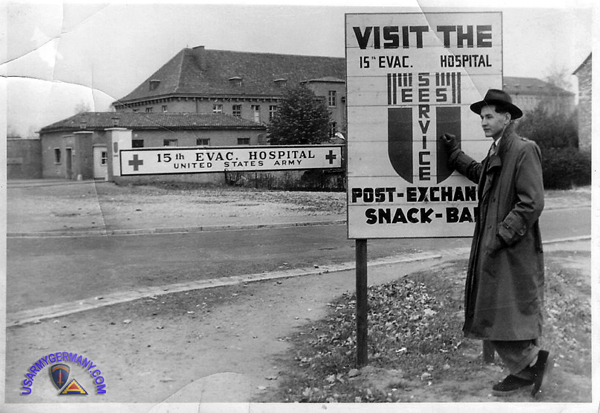 Entrance to the 15th Evacuation Hospital in Nürnberg, 1940s (Webmaster's collection) |
|||||||||||||||||||||||||||||||||||||||||||||
| (Source: 15th Evac Hosp Unit History; USAREUR History Office web site) | |||||||||||||||||||||||||||||||||||||||||||||
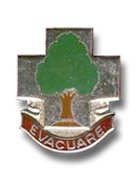 15th Evac
Hosp DUI
15th Evac
Hosp DUI |
|||||||||||||||||||||||||||||||||||||||||||||
|
Activated
as the 15th Evacuation Hospital on
25 August 1949 at Nürnberg, Germany, APO 696. The hospital
had a strength of forty-one officers, fifty-four female officers,
one warrant officer and two hundred enlisted men and was assigned
to Nuernberg Military Post with station at the former German Hospital
(Standort-Lazarett) located at 300 Rothenburgerstrasse, Nürnberg. |
|||||||||||||||||||||||||||||||||||||||||||||
|
|
|||||||||||||||||||||||||||||||||||||||||||||
| 16th Field Hospital | |||||||||||||||||||||||||||||||||||||||||||||
| 1954 | |||||||||||||||||||||||||||||||||||||||||||||
(Source: STARS & STRIPES, April 16, 1954 ) |
|||||||||||||||||||||||||||||||||||||||||||||
All dental services for the Nurnberg-Furth area are now handled by the U.S. Army Dental Clinic at the 16th Field Hospital in Nurnberg. The centralization project has resulted in the closing of the former dental clinic at Merrell Barracks.
The consolidated clinic is operated by the 87th Medical Detachment (Dental Service). The clinic contains 23 dental operating units, with seven officers, nine civilian dentists and four dental hygenists. The clinic has the capacity to handle some 250 patients daily. |
|||||||||||||||||||||||||||||||||||||||||||||
| 20th Station Hospital | |||||||||||||||||||||||||||||||||||||||||||||
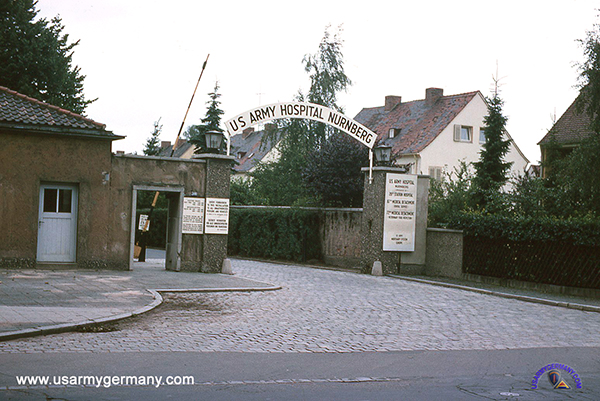 Entrance to the 20th Station Hospital, Nürnberg (Webmaster's collection) |
|||||||||||||||||||||||||||||||||||||||||||||
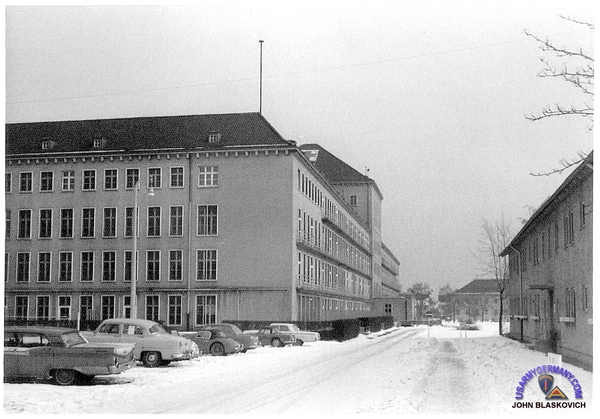 Nurnberg Army Hospital, c. 1963 (John Blaskovich) |
|||||||||||||||||||||||||||||||||||||||||||||
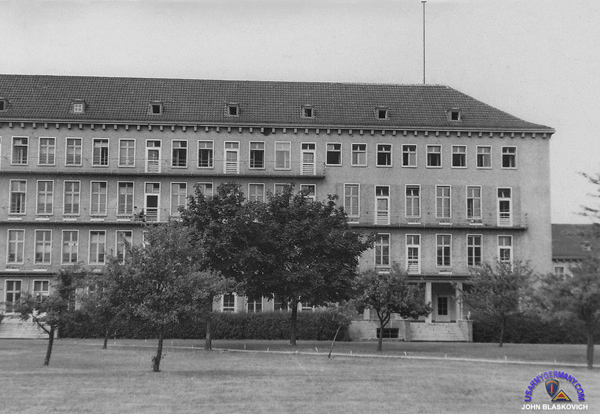 Administration Building (John Blaskovich) |
|||||||||||||||||||||||||||||||||||||||||||||
| (Source: USAREUR Medical Bulletin, March 1961) | |||||||||||||||||||||||||||||||||||||||||||||
| 1966 | |||||||||||||||||||||||||||||||||||||||||||||
(Source: Email from Robert Anderson) |
|||||||||||||||||||||||||||||||||||||||||||||
I came across your website several years ago and I have visited it from time to time. I was and continue to be interested in your fascinating collection of information as I like my father was a career Army Officer. In reviewing the 1st Anniversary Booklet of RMD, I found a number of familiar names. -- On page 8 under LSC Officers. Heribert Schindler and Karl Weise were both still serving in 1976-1980 when I was assigned to USAMMCE. Heribert Schindler was Chief of the Quality Control Division and the highest ranking Civilian Labor Service Officer. -- On page 9 - notables on this page - Douglas Hesford (COL) was the Chief of Logistics, Office of the Surgeon General when he retired. R L Parker (COL) was the Chief, Medical Service Corps when he retired. -- On page 15 - Seymour Meadow (COL) was Chief, Logistics Division, Walter Reed Medical Center when he retired. Relative to the 20th Sta Hosp/130th Gen Hosp and the USAH Nűrnberg. I was assigned to the USAH Nűrnberg from Dec 1966 to Sep 1968. The Operating unit when I arrived was the 20th Station Hospital. I was the Officer designated to relocate the unit property of the 130th General Hospital from Chinon, France to Nűrnberg, Germany after the decision was made on 1 March 1967. While I did relocate all of the unit property that could be found to Nűrnberg by the end of March 1967, the official transfer date was delayed until late September 1967 (I believe it was 1 Oct 67) because it was necessary to resolve a Report of Survey for about $150,000 of missing property. The last Commander of the 20th Station Hospital was COL Douglas Lindsay, MC. He was also the First Commander of the 130th General Hospital at Nűrnberg. Correction to one of the photo captions above The Picture identified as "Administration Building (John Blasovich) is actually the West Wing of the hospital building. The Hospital Headquarters was located on the first floor of that wing. Portions of the upper three floors were the Enlisted Barracks for the Hospital. The picture identified as "Nurnberg Army Hospital, c. 1963 (John Blaskovich)" also show on the right the Bachelor Officer Quarters. (I lived on the first floor of that building for several months.) Unfortunately you do not have a picture of the Hospital Chapel. We were married in the chapel in March 1968. USAMMCE I was assigned to USAMMCE from Dec 1976 to June 1980. I was the Chief, Inventory Management. The position was the new name for the position(Chief, Stock Control Division) that my father had at Rhine Medical Depot in 1952-1953. ADDITIONAL INFORMATION Click here to read more of Bob's memoirs about his time at US Army Hospital Nürnberg in the mid-1960s (PDF File) Click here to read about Bob's time with US Army Medical Materiel Center, Europe at Einsiedlerhof in the late 1970s (PDF file) |
|||||||||||||||||||||||||||||||||||||||||||||
(Source: Email from David Kessler, son of Capt Lawrence Kessler) |
|||||||||||||||||||||||||||||||||||||||||||||
My father, Captain Lawrence Kessler was a dentist in the Army in Nurnberg. I am not positive where he was assigned. It seems likely he was at that hospital as that is the hospital at which I was born at the end of 1967. The sign at the entrance that says "87th Medical Detachement Dental Services" also makes me think that that is where he worked. But I don't know for sure. I have a few pictures of the 20th US Army Hospital in Nurnberg, Germany, that my father took in 1967) |
|||||||||||||||||||||||||||||||||||||||||||||
| 130th General Hospital | |||||||||||||||||||||||||||||||||||||||||||||
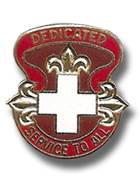 130th General Hospital DUI 130th General Hospital DUI |
|||||||||||||||||||||||||||||||||||||||||||||
| (Source: 130th General Hospital, Nuernberg; USAREUR History Office web site) | |||||||||||||||||||||||||||||||||||||||||||||
|
On
24 June 1945, the 116th General Hospital
(US) under the command of Colonel Paul Hayes took over control of
the hospital. Then the 385th Station Hospital
commanded by Colonel Richard W. Pullen succeeded the General Hospital.
The 385th was followed by the 15th Evac Hospital,
also commanded by Col Pullen. Then it was called the 16th
Field Hospital commanded by Colonel J.Y. Leaver, and
by 1961 it was called 20th Station Hospital
commanded by Col. M.R. Bonsignore. After five years, it was called
the 130th General Hospital.
At present, the USAH Nürnberg is commanded by Colonel R.B. Stuart. |
|||||||||||||||||||||||||||||||||||||||||||||
|
|
|||||||||||||||||||||||||||||||||||||||||||||
| (Source: History of US Army Hospital Nuernberg (130th General Hospital); USAREUR History Office web site) | |||||||||||||||||||||||||||||||||||||||||||||
| Since October
1968, the US Army Hospital Nürnberg has been operated by the
130th General Hospital. The 130th General Hospital was activated in Orleans, France, on 25 Dec 1964. On 1 March 1967, the hospital was reorganized and transferred (as part of Operation FRELOC) to Nürnberg, Germany. |
|||||||||||||||||||||||||||||||||||||||||||||
| If you have more information on the history or organization of the 130th Gen Hosp/USAH Nürnberg, please contact me. | |||||||||||||||||||||||||||||||||||||||||||||
|
|
|||||||||||||||||||||||||||||||||||||||||||||
| 98th General Hospital | |||||||||||||||||||||||||||||||||||||||||||||
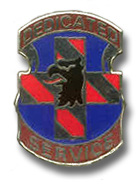 Nuernberg MEDDAC DI Nuernberg MEDDAC DI 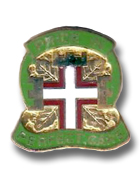 98th General Hospital DI 98th General Hospital DI |
|||||||||||||||||||||||||||||||||||||||||||||
1978 |
|||||||||||||||||||||||||||||||||||||||||||||
(Source: USAREUR Medical Bulletin, April-May 1978) |
|||||||||||||||||||||||||||||||||||||||||||||
The Nuernberg MEDDAC by COL Richard B. Stuart , MD, MC The United States Army Medical Department Activity, Nuernberg has its Headquarters at the US Army Hospital, Nuernberg, a 245-bed medical treatment facility located in the south western corner of the famous old city of Nuernberg. With a population of about half a million, Nuernberg in 1950 celebrated its 900th anniversary. Famous for its handicrafts, its toy manufacturing industry, and its huge round towers on medieval city walls, Nuernberg was designed to be the Capital of Europe by Adolf Hitler. In 1937, Hitler personally dedicated the Nuernberg Army Hospital, constructed from 1935-1937 as the first military hospital built by the German Government after it renounced the limitations of the Treaty of Versailles. During World War II, it was a Wehrmacht general hospital, operated by the medical section of the German 17th Infantry Division. On April 20, 1945 it was occupied by the US Army, which has operated it ever since. A theater and a chapel were added in the 1950s. The hospital now has 200 operating beds, including six intensive care beds, four coronary care beds, and 32 bassinets. The Nuernberg MEDDAC currently provides comprehensive health care services for approximately 40,000 active duty personnel and 20,000 dependents located in 10,000 square miles of northeastern Bavaria. It provides secondary and tertiary health care, as well as a considerable amount of primary care, to the 1st Armored Division, elements of the VII US Corps, and the Seventh US Army Training Command. The US Army Institute of Heraldry recently approved a distinctive badge for the MEDDAC: It shows a cross with red and white stripes - taken from the coat of arms of the City of Nuernberg - upon which the head of a German eagle is superimposed, also from the city coat of arms. The MEDDAC motto is "Dedicated Service." The Nuernberg MEDDAC operates health clinics in Amberg, Ansbach/Katterbach, Bamberg, Bindlach, Erlangen, Grafenwoehr, Hohenfels, lllesheim and Vilseck. A troop medical clinic is also operated at Regensburg. To perform its mission the MEDDAC has assigned approximately 143 officers, 450 enlisted personnel, and 368 civilian employees. The officers include approximately 52 MC officers, 49 ANC officers, 33 MSC officers, two AMSC officers, two VC officers, two warrant officers (one is a PA), and one chaplain. Veterinary services are provided by the 72d Medical Detachment (Veterinary Service), and preventive medicine services by the Health and Environment Activity and the 71st Medical Detachment (Preventive Medicine). Veterinary services include the operation of an Animal Disease Prevention and Control Facility at the hospital kaserne, and food inspection activities throughout the MEDDAC area. The Preventive Medicine Detachment conducts training of field sanitation teams at the various training areas of the Seventh Army Training Command. In the hospital, specialties available include urology, ENT, ophthalmology, allergy, dermatology, neurology, child psychiatry, audiology, and speech therapy, as well as more common primary specialties. In 1977 there were 7,931 admissions to the hospital and 1,408 births. There were 210,568 outpatient visits to hospital clinics and 250,418 outpatient visits to Nuernberg MEDDAC clinics in 1977. In 1977 on an average day there were 141 beds occupied, 22 admissions, four births, and 1,263 clinic visits. The Nuernberg Hospital is especially proud of its two 850 MA X-Ray units with the capability of doing fluoroscopic, routine, and tomographic radiography with the same X-Ray tube. Each $125,000 unit has remote control for patient movement, tube tilt, and anatomic palpation, and any radiographic image can be reversed, flipped upside down and magnified as necessary on the image intensifier. A DuPont Instruments Automatic Clinical Analyzer in the laboratory speeds the completion of blood chemistry tests (29 tests are available and each takes only 37 seconds to complete. after the first one is run all automatically). The Pharmacy Service has a sterile IV products section that prepares its own custom-made sterile intravenous solutions and hyperalimentation fluid for hospitalized patients. Another new technique available to gynecology patients is cryosurgery; culposcopy is also used for GYN patients. Another important service is the 30-day Inpatient Drug and Alcohol Abuse Rehabilitation Program. With trained staff and facilities for 16 patients at a time, the hospital organizes and maintains an environment where comprehensive treatment is carried out. Patients with drug and alcohol abuse problems interact with the rehabilitation team and other members of the group, and examine the role of drug and alcohol abuse in their military careers, and life in general. Modes of therapy include group therapy, individual counselling, relaxation therapy, communitystyled ward activities, psychodrama, transactional analysis, and exposure to Alcoholics Anonymous for alcoholic patients. Many graduates of this program have achieved sobriety and freedom from drugs, and have maintained this throughout a considerable period of follow-up. The Community Health Nursing Section provides a variety of essential services to the community. This includes expectant parent classes, a "We Hear You" crisis telephone service manned by the hospital staff and by volunteers, a five-minute health information radio program ("Today's Health Tips"), a rest and health education center in the Post Exchange Shopping Center four days a week, child advocacy services, and home visits throughout the MEDDAC area. A valuable service is provided by the MEDDAC's community nutritionist, who conducts nutrition education programs throughout the MEDDAC area, including troop dining halls and health clinics. She has also been holding a diet clinic in the hospital, counsels overweight soldiers in the Weight Control Program, and writes a column for the Nuernberg Military Community ACS "Hotline" publication. In recent years a considerable amount of new construction and renovation has been completed in Nuernberg MEDDAC treatment facilities. The large Grafenwoehr and Katterbach Health Clinics and Dental Clinics, and the Erlangen Health Clinic, have been completely renovated. A completely new $1,550,000 health clinic and dental clinic facility for the Bamberg Military Community is now under construction (projected completion date: 1 September 1978). The biggest project involves a $25 million addition and renovation project for the US Army Hospital, Nuernberg. Construction should start in mid-1978. In the meantime, a DM 1.9 million MOUSF (Modernization of US Facilities by the FRG) billet renovation began on 5 October 1977 on one of two hospital kaserne buildings. When the second building is completed in September 1978 the billets for the Nuernberg MEDDAC troops will be the finest in USAREUR. The MEDDAC Commander is COL Richard B. Stuart, MC. His DEROS is 24 July 1979. |
|||||||||||||||||||||||||||||||||||||||||||||
1982 |
|||||||||||||||||||||||||||||||||||||||||||||
(Source: MEDCOM EXAMINER, December 1982) |
|||||||||||||||||||||||||||||||||||||||||||||
Nuernberg: The city and the MEDDAC By Ruth Hamill Editor's note: This is the fifth in a series of articles highlighting 7th MEDCOM facilities. Future issues of the MEDCOM Examiner will feature each of the MEDDACs, MEDCENs and other MEDCOM activities in a series of articles designed to further acquaint people throughout 7th MEDCOM with each facility. Nuernberg is a familiar name to many Americans at home and abroad. Not only is it the home of the annual Christkindelmarkt, it is also remembered as the site of the Nuernberg War Trials following World War II. More than 900 years old, Nuernberg's varied history provides a beautiful backdrop for today's modern city. The Nuernberg MEDDAC is headquartered in the 98th General Hospital located on Standort-Lazarett Kaserne in the southwestern corner of the famous city. The MEDDAC serves 74,000 eligible health care recipients (51,000 military) spread across 12,000 square miles. The geographic area of responsibility reaches from the borders of East Germany and Czechoslavakia on the north and cast, to the Danube River on the south and the Tauber River on the west. According to Col. Leslie M. Burger, MC, commander of the Nuernberg MEDDAC and the 98th General Hospital, it is 7th MEDCOM's largest community hospital in terms of population served and the number of health clinics. He also said that the eligible population is increasing. The MEDDAC provides support for the 1st Armored Division, the 2nd Armored Cavalry Regiment and other elements of VII Corps, the 7th Army Training Command, certain facilities in Saudi Arabia and the American embassies in Prague and Vienna. Construction of the hospital began 45 years ago and was completed in 1937. It was the first Army hospital the German government built after their renouncement of the Treaty of Versailles. The Wehrmacht Hospital was intended as a showpiece for the then "New Germany" and was personally dedicated by Adolf Hitler. It was called Standort Lazarett (local military hospital). The term "Lazarett", used in conjunction with several 7th MEDCOM facilities, dates back to the time of the Crusades when there were 5,000 leprosariums in France and Germany alone. The leprosariums were commonly called Lazar-houses, so named because traditionally Lazarus was believed to have suffered from the disease. Since crusaders (soldiers) carried the disease into Europe, military hospitals have been called "Lazaretts" ever since. |
|||||||||||||||||||||||||||||||||||||||||||||
|
|||||||||||||||||||||||||||||||||||||||||||||
Since 1945 the hospital has had several tenant units. On Oct. 15, 1981 the facility was officially designated as the 98th General Hospital. In addition to the 98th, the Nuernberg MEDDAC also supports 10 outlying health clinics in Crailsheim, Katterbach, Illesheim, Bamberg, Bindlach, Erlangen, Grafenwoehr, Vilseck, Amberg and Hohenfels. The MEDDAC includes the 72nd Medical Detachment (Veterinary Services) commanded by Lt. Col. Clifford Thigpen and the 71st Medical Detachment (Preventive Medicine) headed by Capt. Ted Lamoe. The 87th Medical Detachment (Dental Service) is colocated in the installation with the hospital, but now provides for its own command under the organization of the Nuernberg Dental Activity (DENTAC) commanded by Col. Wallace Luther, and operates 13 dental clinics. |
|||||||||||||||||||||||||||||||||||||||||||||
New Care Center Although there have been numerous small projects over the years to upgrade the hospital, the current $40 million new construction and renovation is the first major project since the central section that was damaged in the war was repaired in 1947. It includes a 118,750 square foot addition completed in April 1981 and dedicated by Maj. Gen. Floyd W. Baker, commander of 7th MEDCOM. Although the addition was identified as a military construction line item in 1966, there were numerous delays due to Fiscal restraints brought on by the Viet Nam era such that the contract was not awarded until December 1975. Construction began July 15, 1978. The addition contains a new operating suite with four operating rooms, a recovery room 14-bed ICU/CCU, Central Material Supply, Emergency Room, Outpatient Department, Radiology, Pathology, Orthopedic Clinic, Physical Therapy, Department of Medicine (with specialty clinics), Labor and Delivery, and the Newborn Nursery. The renovation portion of the project encompasses 247,670 square feet and is scheduled for completion by 1985 and will include a complete renovation of all facilities. According to Lt. Col. Ann Philiben, Chief Health Facililes Planning Officer, there are several ongoing projects al the outlaying health clinics as well. A $559,000 renovation of the Illesheim Clinic began June 22, 1981 and was completed this year. A new 13,266 square foot building has been constructed to house the Amberg clinic. The Clinic, costing in excess of three million DM, was begun on August 24, 1981 and opened on October 8, 1982. The Nuernberg Dental Clinic is also in the midst of an over two million DM renovation which should be completed in January 1983. The Nuernberg MEDDAC offers an extensive range of services to include internal medicine, dermatology, nuerology, pediatrics, general surgery, ophthalmology, ENT, urology, orthopedics, podiatry, physical therapy, audiology, speech pathology, obstetrics-gynecology, family practice, emergency medicine, psychiatry, psychology, social work, preventive medicine, oral surgery and anesthesiology. According to Col. Burger, the MEDDAC is supported by the Nuernberg City hospital, the Fuerth City Hospital and also utilizes the excellent neonatal and neurosurgical facilities of the University of Erlangen Medical Center. The 98th General Hospital currently has 175 beds. The Hospital averages 675 admissions per month. There were over 450,000 outpatients seen MEDDAC-wide last year and over 1,200 babies were delivered at the Hospital. Community minded As of the end of October, the MEDDAC and DENTAC staff comprised more than 1,300 people inlcuding 592 enlisted personnel, 188 officers and 559 civilians of which 314 were Department of the Army civilians. There are approximately 80 physicians (61 military) at the MEDDAC. Col. Burger, an internist, and the consultant in infectious diseases to 7th Medical Command, has been in Nuernberg since May, 1980. He took command of the MEDDAC in June 1982 after serving as Deputy Commander and Chief, Professional Services. Dr. Burger is most interested in getting out into the community. He stated, "the reason we are here is to provide health services for the 74,000 soldiers and family members who live and work in our geographic region. Whether it be vision screening in the schools, providing an adolescent clinic for our children in the high school, applying a cast to a fractured arm in Orthopedics or doing a complicated surgical operation, it is our goal to provide the high quality medical care our patients deserve." Col. Brodes H. Hartley, Executive Officer for the Nuernberg MEDDAC, added, "Our staff is actively involved in community programs such as KONTAKT, Chrismas exchanges and German-American Men's and Women's Clubs. Also, the Nuernberg High School Scholarship Fund is essentially handled by the MEDDAC. I would say we are very involved in community activities." Hartley will retire on December 3, and plans to join the staff of Florida A&M University in Tallahassee. Col. Edward H. Uemura who curretly commands the 68th Medical Group, is his replacement and will come on board January 17. Center of Medieval culture CSM Henry Hurst has been with the MEDDAC ten months. He said, "Here at the 98th 1 would like to change the living space for the troops because it is quite small and crowded, but that is due to the very limited size of the kaserne. There are plans for a gym facility in 1985 or 1986, though." Yet there is no lack of things to do in Nuernberg, thanks to its long history. Hundreds of years ago Nuernberg was a center of medieval culture located at the intersection of two main highways of European traffic. Its main industries did not differ greatly from today's toys, fine clothing and spicy gingerbread. Although the city perservered throughout the years the Altstadt and much of the new city were badly damaged by bombing during World War lI. After the war, Nuernbergers were so concerned with the restoration of the city wall, it receive higher priority than shelter for the war-weary citizenry. Following the repair of the wall, the Altstadt was meticulously restored and today has 12 square acres of narrow streets containing an unsurpassed collection of masterpieces of architecture, sculpture and paintings, all located within minutes of the Nuernberg MEDDAC. |
|||||||||||||||||||||||||||||||||||||||||||||
|
1980s
|
|||||||||||||||||||||||||||||||||||||||||||||
| (Source: USAMEDDAC Nuernberg Fact Sheet, Feb 1982; USAREUR History Office web site) | |||||||||||||||||||||||||||||||||||||||||||||
| The Nürnberg
MEDDAC provides support for all 1st Armored Division
elements of VII Corps and the Seventh Army Training Command encompassing
an area of approximately 12,000 square miles. The patient population is approximately at 73,000 (50,000 military, 21,500 family members and 1,900 others). The average daily outpatient load for the MEDDAC is 1,300 with approximately 550-600 patients being seen at the hospital. The inpatient bed utilization averages 85% of the beds availabe (approx. 144 daily). The hospital averages 3 babies delivered, 23 patients admitted, 10 operations performed and 10,000 laboratory procedures accomplished daily. The specialties offered at the hospital can be divided into the major categories of surgical, medical and mental hygiene. In surgery the specialties are general, orthopedic, eye, ear, nose & throat, physical therapy, podiatry, speech pathology, audiology, and urology. In medicine the hospital offers internal medicine, neurology, dermatology and pediatrics. In mental hygiene the specialties include adult psychiatry, child psychiatry, social work service, inpatient drug and alcohol abuse treatment, psychology, and Community Health Nursing which provide various counseling and education services. ORGANIZATION (1982): |
|||||||||||||||||||||||||||||||||||||||||||||
|
|||||||||||||||||||||||||||||||||||||||||||||
| The 87th Medical Detachment (Dental Services) is colocated in the installation with the hospital but provides its own command under the organization of the Nuernberg Dental Activity (DENTAC). The detachment operates 13 dental clinics throughout the same area covered by the MEDDAC. | |||||||||||||||||||||||||||||||||||||||||||||
| If you have more information on the history or organization of the 98th Gen Hosp/USAH Nürnberg, please contact me. | |||||||||||||||||||||||||||||||||||||||||||||
|
|
|||||||||||||||||||||||||||||||||||||||||||||
| 536th General Dispensary | |||||||||||||||||||||||||||||||||||||||||||||
1952 |
|||||||||||||||||||||||||||||||||||||||||||||
(Source: THE DAILY REGISTER, Harrisburg, Ill., March 22 1952) |
|||||||||||||||||||||||||||||||||||||||||||||
1st Lt. McDonald is the commanding officer of the 536th General Dispensary at Ansbach. The dispensary is a 43-bed facility located in a four-story brick building. The staff consists of medical officers, dental officers, an administrator, enlisted specialists and civilian employees . |
|||||||||||||||||||||||||||||||||||||||||||||
1962 |
|||||||||||||||||||||||||||||||||||||||||||||
(Source: Email from Larry Moore) |
|||||||||||||||||||||||||||||||||||||||||||||
I was with the 536th General Dispensary at Ansbach from Sept 1962 until March 1964. At that time it was on Hindenburg Kaserne. The dispensary was subordinate to the 20th Station Hospital, Nuremberg,Germany. We wore the USAREUR patch -- the Flaming Sword. One of the Doctors was a Capt. Carr; there was also a Capt. Barth, First Sgt. Reynolds, office mgr was Spec 5 Moctezuma, Spec 4 Roy Underwood, Spec 4 Marvin Spatz was the Pharmacist, had a PFC Jimmy Dickson, PFC Freddy Alexander, PFC Charles Lara, there were more but I can't remember names. I was a PVT E-2. I was drafted in March 1962. Went thru basic at Ft.Leonard Wood, MO. and medic training at Ft.Sam Houston, San Antonio , TX. I did get an Honorable Discharge when it was over. I don't have any photos. The dispensary was a small 2-story bldg. From your map I'm sure it was #5365. We only took care of dependants (wives and children), MP's and Medics. I believe our housing was bldg. 5369 and commissary was 5401. In our housing was MP's and Medics, I think one of the MP's was Kenny Stabler later played quarterback for the Raiders. They had some kind of little football league there. That is the best I can give you. |
|||||||||||||||||||||||||||||||||||||||||||||
| 72nd Medical Detachment (Veterinary Services) | |||||||||||||||||||||||||||||||||||||||||||||
(Source: Robert L. Smith, 72nd Med Det) |
|||||||||||||||||||||||||||||||||||||||||||||
I had just found the Regensburg page. I was assigned to the 72 Med. Det. VFI, 20th Station Hospital, Nurnberg. The VFI stands for Veterinary Food Inspection. We were responsible for inspection, proper rotation of food items, and cleanliness of Class 1 Supply points, mess halls and Commissaries for any and all U.S. Military Installations. We also did vaccinations on animals owned by the military and the troops (pets) that were station there. My tour of duty in Germany started in 1962 in Nurnberg. In the summer of 1963 I was TDY to Regensburg for the remainder of my time in Germany which was the summer of 1965. The 72nd. had a small office at the Class 1 Supply Point in Regensburg. Out of that office I also had the commissaries in Landshut, Straubing and Hohenfels. The Commissary for the toops, wives, and independents was at the same place as the Class 1 Supply Point, only in front of if I remember right. Where was that? I don't remember. I do not think that it was on any of the kaserne's that the U. S. occupied at the time. Can you help me please? I had married a German National when I was in Nurnberg and we were living north of the river. I remember that I had to take a bus to get to work, don't remember if I had to make a transfer or not. There was railroad spur into the compound to receive railroad cars for the supply point. Seems like there were other buildings but I did not have anything to do with them so am lost to what all was there. |
|||||||||||||||||||||||||||||||||||||||||||||
| Related Links: |
|||||||||||||||||||||||||||||||||||||||||||||
